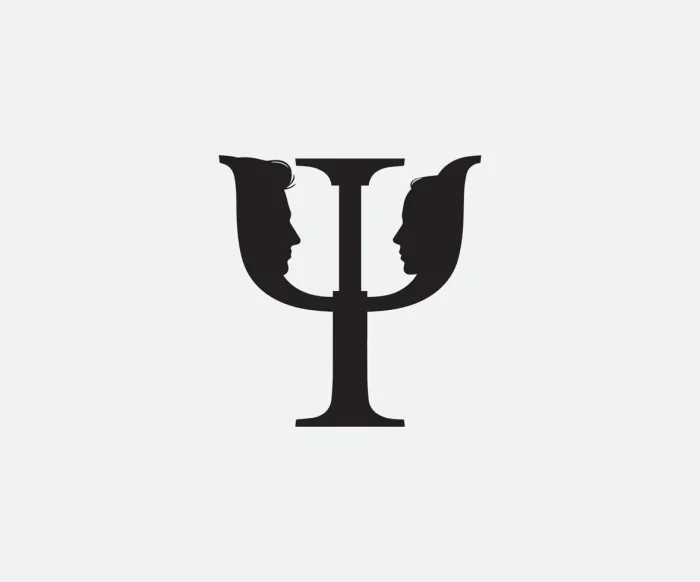Symbols have always played a central role in human communication, and psychology, as a scientific and philosophical discipline, is no exception. One of the most recognized representations of the field is the psychology symbol—a unique emblem that carries layers of meaning, tradition, and identity. Though often overlooked, understanding the origin and use of this symbol reveals a lot about how the discipline perceives itself and communicates its values.
What Is the Psychology Symbol?

The symbol most commonly associated with psychology is the Greek letter psi (Ψ), pronounced “sigh.” It is the 23rd letter of the Greek alphabet and has long served as a visual shorthand for the study of the mind, behavior, and human cognition.
In academic institutions, research publications, therapy clinics, and even pop culture references, this emblem is used to denote the presence or context of psychological study. Despite its simplicity, psi carries historical and conceptual weight.
Historical Origins of Psi
Psi originates from the Greek word “psyche,” which means breath, spirit, or soul. In classical philosophy, psyche was the essence of life—something invisible yet deeply influential. This interpretation carried forward into the development of modern psychology, especially in the 19th century when the discipline emerged as a formal scientific field.
The use of the psi symbol was adopted to represent this idea of the unseen mental and emotional life of individuals. Over time, it became standardized as the emblem for psychological study.
Visual Characteristics of the Symbol
The psi symbol resembles a trident or a forked staff. It consists of a vertical line with two upward-curving lines branching out from the top, forming a symmetrical Y-like shape.
Common uses of the symbol include:
- University psychology department logos
- Medical forms and therapy directories
- Textbooks and academic journals
- Badges, pins, and insignia in professional psychology organizations
Its clean, minimalist design allows for easy recognition across various mediums, whether printed or digital.
Psi vs. Other Greek Letters in Science
While psi is associated with psychology, other Greek letters represent different fields:
- Alpha (α) and beta (β) are common in physics and statistics
- Delta (Δ) often represents change in mathematics
- Sigma (Σ) is frequently used in summation and statistical analysis
Psi stands out for its specific link to the human mind and behavioral science.
Cultural Interpretations of the Psychology Symbol
While psi has scientific roots, its meaning can shift depending on the context. In Greek mythology, the term psyche also represented a soul personified as a young woman who undergoes trials for love and spiritual growth. This adds an emotional, almost poetic dimension to the symbol.
In modern culture, the symbol is sometimes associated with mental health awareness, especially when stylized in blue or green tones—the colors most often associated with wellness and healing.
Use of the Symbol in Clinical Practice
Clinicians, psychologists, and counselors often use the symbol in their practice for branding and professional identification. While it does not denote any licensing authority, its appearance on signage or stationery often implies a connection to trained psychological services.
It also serves to destigmatize mental health by making psychological support more visible and familiar to the public.
Modern Adaptations and Digital Usage
In the digital age, the psychology symbol appears in:
- Unicode character sets as Ψ (U+03A8)
- Icons on academic platforms or psychology databases
- Emoji alternatives or avatars representing mental health fields
Designers frequently incorporate it into app icons for meditation, therapy, or mood tracking tools, further embedding the symbol into everyday digital experiences.
Should the Symbol Be Updated?
There are ongoing conversations in some academic circles about whether the traditional psi symbol still adequately represents the evolving field of psychology. As the discipline expands to include neuroscience, AI behavior modeling, and social justice, some professionals argue that a new or updated symbol could reflect these changes better.
However, most agree that the historical continuity and recognition of psi still hold significant value, especially for educational and branding purposes.
FAQs About the Psychology Symbol
What does the psychology symbol look like?
It resembles a trident or Y-shape and is derived from the Greek letter psi (Ψ).
Why is the psi symbol used in psychology?
Psi comes from the Greek word for “soul” or “mind,” making it a fitting representation for the field that studies mental and emotional processes.
Is the psychology symbol used globally?
Yes, psi is recognized in psychology departments and institutions across the world as a universal representation of the field.
Can the symbol be used in professional branding?
Many psychologists and mental health professionals use the symbol in their logos or materials to indicate their area of expertise.
What is the Unicode for the psi symbol?
The uppercase psi is represented by U+03A8 in Unicode, which can be used in digital formatting and design.
The psychology symbol may appear simple, but its meaning runs deep. With roots in ancient Greek philosophy and a legacy that spans centuries of academic thought, psi represents not only the study of human behavior but also the ongoing journey of understanding the human mind. Whether seen on a university brochure or a therapist’s business card, it serves as a quiet but powerful signal of compassion, research, and self-awareness. As the world continues to explore the complexities of mental health, the enduring presence of this symbol reminds us of the importance of psychological insight in every aspect of life.

